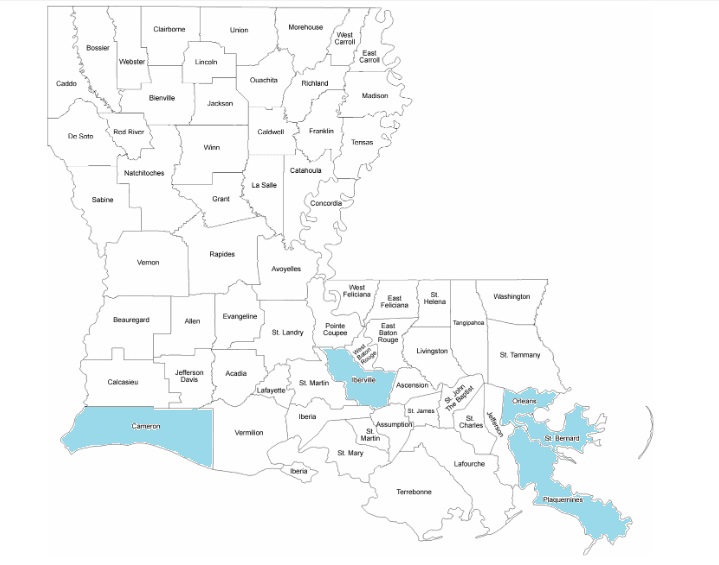


One male (1961-07) on 4 December 1961, Plaquemines: 2 mi. NW Venice; Brian Donlan (LSUMZ 27032) and S. A. Gauthreaux (*) (Lowery 1974).
One (1983-15; formerly 84-27) collected (LSUMZ 113039) two miles South of Cameron, Cameron Parish, on 17 December 1983 (PSc*, VR). This is the first record of this species in western Louisiana, and also the first record for anywhere in the state in at least eight years.
One immature male (1984-42) on 23 Sept 1984, Cameron: Hackberry Ridge, 2 mi. WSW of Johnsons Bayou School; Steven W. Cardiff (LSUMZ 118775); AB39(1):66.
One immature male (1987-07; formerly 89-62) on 8 Nov. 1987, Cameron: GR; Steven W. Cardiff (LSUMZ #135097), DLD (Purrington 1988, p. 90). This is only the fifth specimen for Louisiana.
One immature male (93-93) on 16 Jan. 1993, Plaquemines: 1/4 mi. S of Ft. Jackson; Steven W. Cardiff (LSUMZ 159195).
One adult male (93-94) on 16 Jan. 1993, Plaquemines: 1/4 mi. S of Ft. Jackson; Steven W. Cardiff (LSUMZ 159196).
One immature male (93-95) on 16 Jan. 1993, Plaquemines: 1/4 mi. S of Ft. Jackson; Steven W. Cardiff (LSUMZ 159197). This and the two preceding records are cited in AB 47(2):268.
One (1993-33) on 19 Apr 1993, Cameron: Peveto Beach Woods; John P. O'Neill; AB47(3):422.
Two (1993-53) on 26 Nov 1993, Plaquemines: W. side of Hwy. 23 across from Fort Jackson; Peter H. Yaukey; AB48(1):119.
At least one (1994-104) on 15 January 1994, Plaquemines: Fort Jackson Woods; Phillip A. Wallace. See also accepted record 1994-116 (Tenth Report), possibly from same locality on 22 January 1994, may pertain to same individual; also, conceivably could have been one of four specimens collected 26 January 1994 (Eighth Report) including two M. t. magister.
Two (1994-116) on 22 Jan 1994, Plaquemines: Venice; James Beck.
One adult female (94-82) on 26 Jan. 1994, Plaquemines: 1/2 mi. S of Ft. Jackson; Steven W. Cardiff (LSUMZ 159811).
One immature male (94-83) on 26 Jan. 1994, Plaquemines: 1/2 mi. S of Ft. Jackson; Steven W. Cardiff (LSUMZ 159812).
One immature female (94-84) on 26 Jan. 1994, Plaquemines: 1/2 mi. S of Ft. Jackson; Steven W. Cardiff (LSUMZ 159813) and Donna L. Dittmann.
One immature male (94-85) on 26 Jan. 1994, Plaquemines: 1/2 mi. S of Ft. Jackson; Donna L. Dittmann (*) and Steven W. Cardiff (LSUMZ 159814). This and the preceding record were collected together and represent the first Louisiana records of the western subspecies magister. This and the preceding three records are cited in FN 48(2):217.
One (95-21) on 22 Feb 1995, Plaquemines: Venice, S. side of Hwy. 23, across from main entrance to Ft. Jackson; Steven W. Cardiff and Donna L. Dittmann; NASFN 49(2): 158. This sighting may or may not pertain to other Brown-crested Flycatchers reported in the Fort Jackson area during winter 1994-1995 (LOS News 164: 7). The report indicates that the bird appeared to be of the expected subspecies, M. t. cooperi.
One male (95-130) on 28 Jan. 1995, Plaquemines: 1/4 mi. S of Ft. Jackson; Steven W. Cardiff (LSUMZ 161282) (LOS164). A general reference is FN 47(2):158.
One adult male (96-70) on 14 Sep. 1996, Cameron: approx. 5 mi. E of Cameron; Steven W. Cardiff (LSUMZ 162254) and Donna L. Dittmann (FN 51(1):70, LOS 177).
One (1999-48) on 31 Jan 1999, Plaquemines: W. side of Hwy. 23 across from Fort Jackson; David P. Muth, Phillip A. Wallace, Robert D. Purrington; NAB53(2):175.
A minimum of two birds (2000-6) on 20 & 27 Feb 2000, Plaquemines: Venice, just W of Fort Jackson; Phillip Wallace (ph taken both dates), Robert D. Purrington (ph taken 27 Feb), B. Mac Myers III; NAB 54(2): 189.
One (2000-54) on 7 Nov 2000, Plaquemines: below Venice, intersection of Tidewater Road and road to Venice Marina, near Tidewater; Jim Holmes (ph).
One immature female (2000-70) on 30 Dec 2000, Plaquemines: 1/2 mi. S of Ft. Jackson, B. Mac Myers III (LSUMZ 171846; Donna L. Dittmann), Phillip Wallace. Specimen is of the expected subspecies, M. t. cooperi.
One (2001-45) from 29 Dec 2001 to (presumably same individual relocated on) 21 Jan 2002, Plaquemines: W. side of Hwy. 23 across from Fort Jackson; Phillip A. Wallace and B. Mac Myers III (ph); NAB56(2):185.
Two (2004-034) on 2 January 2004, Plaquemines: across Hwy. 23 at Fort Jackson;
Phillip A. Wallace.
One (2004-67) from 26 Dec 2004-6 Mar 2005, Orleans: New Orleans, Bayou Sauvage
NWR, Maxent Canal about 150-300 yards from railroad tracks; Phillip A. Wallace (ph) and
David P. Muth (ph); NAB59(2):281.
One (2008-62; incorrectly published as 2008-68) 30 December 2008 � 25 February
2009, Plaquemines: Diamond, vicinity of Diamond River and
Fosters roads,
Phillip Wallace
(ph) and
Justin Bosler
(ph).
One adult (2010-57) on 28 February and 6 March
2010, Plaquemines: Caernarvon, downriver side of levee off
Hwy. 39;
Phillip A. Wallace
(ph);
and
Edward J. Raynor and Hannah Tetreault
(ph).
One (2011-038) on 2 January 2011, Plaquemines: woods below Fort Jackson;
Phillip A. Wallace
(ph)
and
John P. Sevenair
(ph).
One (2011-037) on 8 January 2011, Orleans: New Orleans, derelict Eastover Golf Course near Dwyer Rd.
x I-510;
Phillip A. Wallace
(ph).
One to two apparent adults (2011-141) on 29 December 2011, Plaquemines: about 0.6 mi. upriver from entrance to Fort
Jackson and about 0.3 mi. inland from Hwy. 23;
Phillip A. Wallace (video).
One (2012-003) on 21 January 2012,
Plaquemines: adjacent to Diamond Recreation
Center;
Phillip A. Wallace
(ph) and
Mary Mehaffey
(ph).
One (2012-032) on 27 and 29 December 2012, Plaquemines: Diamond;
Phillip A. Wallace
(ph) and
Jay V. Huner.
One (2012-040) from 22 December 2012-20 January 2013, Orleans: New Orleans, Bayou Sauvage NWR, Recovery Rd., old
Recovery I landfill;
Phillip A. Wallace
(ph),
Dan O�Malley
(ph).
One (2014-051) on 29-30 March 2014, Plaquemines: Port Sulphur: woodlot just SE of Dollar General store along Hwy. 23;
Cameron Rutt
(ph).
One (2015-006) on 2 January 2015, Plaquemines: across Hwy. 23 from Fort Jackson;
Phillip
A. Wallace
(ph).
One (2015-024) on 29 March 2015, Plaquemines: Port Sulphur, north of Trigg Ln. and W of
River Rd.;
Cameron Rutt (ph).
One (2015-026) from 26 December 2015-27 January 2016, St. Bernard: Chalmette,
Chalmette Battlefield;
Janine Robin (ph),
J. V. Remsen (ph),
David P. Muth (ph),
Jay V. Huner, and
Erik I. Johnson.
Reportedly found on 26 December 2015 by Christina Riehl
and Tom and Jennifer Coulson during the New Orleans CBC. See also
eBird:
(includes photo by Joan Garvey). Whereas, this
species is nearly annual in occurrence (up to three accepted records/year, e.g., 2015 above),
many records involve staked out individuals (such as photographed left), this species has not
yet met the threshold for removal from the Review List. Brown-crested
Flycatcher also remains an identification challenge, with only 66% of the submitted records accepted to date.
One (2016-039) on 12, 18 November 2016, Orleans: New Orleans, Bayou Sauvage NWR on
Recovery Road;
Joan M. Garvey (ph),
Janine Robin (ph), and
J. V. Remsen (ph).
One (2017-007) on 5 January 2017, St. Bernard: Chalmette Battlefield (Jean Lafitte National Historic Park
and Preserve), between battlefield and cemetery;
Robert C. Dobbs (ph).
One (2017-063) 26 November 2017, St. Bernard: Chalmette Battlefield,
Rosemary Seidler (ph).
Reportedly discovered by Glenn Ousset on 22 November 2017. A bird has been wintering at this site since winter
2015-2016 (see also 2015-006, Dittmann and Cardiff 2016, and 2017-007, above). Last eBird date is 31 December
2017.
Two (2017-079) on 22 December 2017, Plaquemines: Scarsdale Rd.,
J. V. Remsen (ph). Reportedly
found by Matthew L. Brady.
One (2018-009) on 6 January 2018, Plaquemines: Stella Plantation, east bank Mississippi River, approx. 1.5
mi. downriver from Belle Chase ferry landing;
J. V. Remsen (ph only) and
Robert C. Dobbs (ph)
. See also
https://ebird.org/view/checklist/S41696508.
One (2019-059) on 23 November-21 December 2019, St. Bernard: Chalmette Battlefield; Joan Garvey (ph; https://
ebird.org/checklist/S61691645) and Jennifer O. Coulson (ph; https://ebird.org/checklist/S62566663). This record was
originally published as not accepted in the 23rd Report; but was recirculated with additional information and photos.
One (2019-052) on 8 December 2019, Cameron: Willow Island, 7 mi. E Cameron; Paul E. Conover (ph), Dave
Patton (ph only), and Phillip A. Wallace (ph only).
One (2019-057) on 31 December 2019 to at least 5 January 2020, Orleans: New Orleans, Bayou Sauvage
NWR, Ridge Trail; Michael C. Mahoney (ph, audio), John Nelson, and Joan Garvey (ph only). A bird photographed at this location 17-18 January is considered a different individual (not yet submitted for review: https://eBird.org/view/checklist/S63520427). Photographs on additional eBird lists from this location may also represent different individual(s), e.g. 28 January 2020 seems to have slightly shorter central rectrices (https://eBird.org/view/checklist/S63884109), and the last report/photos on 18 February appears to have a relatively petite bill (https://eBird.org/view/
checklist/S64736332). The LBRC would appreciate receiving additional reports to help resolve these records.
One M. t. magister (2020-011) on 2 February 2020, Plaquemines: Triumph, Morel’s Woods; Daniel F. Lane (ph), David P. Muth (report received after Newsletter publication). Reportedly first spotted by Michele McLindon. Photos appear in eBird lists: https://eBird.org/checklist/S64090105. There is only one previously accepted specimen record of M. t. magister (two individuals) for Louisiana; all other accepted Louisiana occurrences have involved M. t. cooperi (or at least presumably so).
One (2020-099) on 18 February 2020, Orleans: New Orleans, Bayou Sauvage NWR, Ridge Trail; Mitch Foret (ph). This was considered a different individual than LBRC 2019-057 present at the same location from 31 December 2019 to at least 5 January 2020 (24th Report).
One (2020-073) on 26 December 2020-7 January 2021, St. Bernard: Chalmette Battlefield and National Cemetery,
N29.9442103, W89.9877926; Oscar Johnson and Jennifer O. Coulson (ph). Likely same individual returning for its sixth
winter. In eBird first reported with photo (https://ebird.org/checklist/S78037249), then many lists/photos to 7 January 2021
(https://ebird.org/checklist/S78855200).
One (2021-092) on 27 November 2021, Plaquemines: Fort Jackson; Esme Rosen (ph).
One (2022-009) on 16 March 2022, Iberville: Sherburne WMA, South Farm; Esme Rosen (ph).
One (2023-068) on 28 October 2023 and presumably the same individual 11 & 29 Nov, 24 Feb 24,
Plaquemines: Diamond, Esme Rosen (ph) and David P. Muth (ph).
One (2023-090) on 7 and presumably the same individual 21 December 2023, Plaquemines: Morel’s
Woods, Jack Rogers (ph and audio) and David P. Muth (ph).
One (2024-003) on 15 January 2024, Plaquemines: Jump Basin Woodlot; Jack Rogers (ph).
One (2024-008) on 27 January 2024, Plaquemines: cemetery north of Venice; Nick
Ramsey (ph).
One (1983-10; formerly 84-22) near Lafayette,
Lafayette Parish, 18 December 1983.
One (1985-095) on 23 November 1985, Iberia: Spanish Lake. Description did not include information on
diagnostic characters that would eliminate other Myiarchus flycatchers.
One (1986-03; formerly 87-1) on 24 Aug. 1986, Jefferson: Grand Isle. The description does not eliminate Great Crested
Flycatcher, which would be much more likely at this time of the year. Purrington (1987, p. 102) reported
this individual as an �apparent� Brown-crested Flycatcher.
One (1987-28? 87-27) on 10-11 Oct. 1987, Jefferson: Grand Isle (AB 42(1):90). Because the bird was silent and the pattern of the rectrices was not described, Ash-throated (M. cinerascens) and Great Crested (M. crinitus)
flycatchers could not be eliminated. Contrary to field guide descriptions, there is some overlap in overall
size, bill length and coloration, and plumage characters of these three species. Photographs, voice
recordings, or specimens should be obtained to properly document extralimital Myiarchus.
One (1991-35) on 21 Sep. 1991, St. John the Baptist: Reserve. The difficulty of distinguishing this species
from the more regularly occurring Ash-throated Flycatcher (M. cinerascens) is underestimated. The
observer did not hear the bird or note the pattern of the tail feathers. There were no photographs.
One (1993-13) on 23 Feb 1993, Plaquemines: Venice, scrub opposite side of Hwy. 23 at Fort Jackson; AB47(2):268. Although most members believed that this bird was correctly identified,
the identification was primarily based on the tail pattern observed by only one of the two
observers. Other field marks cited in the descriptions were not necessarily useful or diagnostic
for Brown-crested, or were actually more suggestive of Ash-throated. The record was ultimately
deemed unacceptable after three circulations.
One (1993-26) on 23 Feb 1993, Plaquemines: Venice, scrub opposite side of Hwy. 23 at Fort
Jackson; AB47(2):268. Although reported size, proportions of the bill, and call notes supported
the identification, the carefully described �tertial� (proximal three secondaries) pattern was
incorrect for this species. For a majority of members, this was enough to question the
identification.
Two (1993-36) on 6 Mar 1993, Plaquemines: Venice, scrub opposite side of Hwy. 23 at Fort
Jackson. Most members believed that this observation was best left as �Myiarchus sp.� The
pattern of the rectrices was problematic, and interpretation of the described vocalizations was
difficult. One of the submitting observers was also not totally convinced of the certainty of the
identification.
One (1994-02) on 29 Jan 1994, Plaquemines: Venice, scrub opposite side of Hwy. 23 at Fort
Jackson; NASFN48(2):217. A majority of members believed that the details of the observation
did not support identification of this species.
One adult (1994-075) on 24 November 1994, Vernon: residence near DeRidder. The identification was based primarily on the perceived large size and the relative intensity of yellow on the under parts. Unfortunately, these characters are subjective and more diagnostic features such as the tail pattern or vocalizations were not described. For these reasons, Members were in agreement that acceptance was not advisable.
One (1995-27) on 5 Feb 1995, Plaquemines: Venice, scrub opposite side of Hwy. 23 at Fort
Jackson. The description of plumage, size, bill, and tail pattern were considered ambiguous and
insufficient to rule out an Ash-throated Flycatcher.
One (1996-16) on 18 Feb 1996, Orleans: New Orleans, Bayou Sauvage NWR Visitor Center.
Although opinion was split on this report, dissenting members prevailed on concerns that the
bird was not heard, that the tail pattern was described from above (not below), and that other
reported field marks were not diagnostic for this species.
One (1998-049) on 10-12 May 1998, Gulf of Mexico: Vermilion 265 oil platform, N28.5152500°, W92.45111° (ph).
Although the description was relatively convincing for this species, all Members believed that the photo clearly showed an Ash-
throated Flycatcher.
One (1998-123) on 29 Dec 1998, Jefferson Davis: Lacassine NWR; FN52(2):210. The
Committee agreed that the description did not include enough detail to eliminate Ash-throated
Flycatcher.
One (1999-32) on 23 Apr 1999, Cameron: East Jetty Woods, 1 mi. S of Cameron;
NAB53(3):290. This record received a unanimous vote on the second circulation, at which point
the Committee agreed that the photograph was more indicative of an Ash-throated Flycatcher.
One (1997-66) on 29 December 1997, Plaquemines: Venice; woods at Coast Guard Station. The bird did not vocalize and
the tail pattern was not well seen. Although it was reported that the bird responded positively to a tape of a Brown-crested Flycatcher, this was not enough to overcome the general lack of diagnostic details and all Members believed that this record was best relegated to Myiarchus sp.
One (2006-043) on 16 December 2006, St. Martin: Henderson, Henderson Levee Rd. outside of St. Martin Land
Company. This was a brief observation and identification was mainly based on perceived size and color. Diagnostic characters were not observed, which was problematic.
One (2011-140) on 29 December 2011, Plaquemines: big woods just downriver from Fort Jackson. Most Members believed
that the photos/video better supported identification as an Ash-throated Flycatcher, or were at best equivocal.
One (2012-107) on 20 January 2012, Orleans: New Orleans, Bayou Sauvage NWR � Recovery
Rd., approximately 1 mi. from Hwy. 90. This is an interesting case because it is a report involving a
potential �stake-out� that would extend the last observed date of the previously accepted record. The
description was brief and critical identification characters were not seen or described (e.g., details of the
tail, voice, etc.). It is quite possible that the observer did see previously accepted LBRC 2012-040.
Members also considered the observer may have submitted abbreviated details believing that this
particular individual had already been well-documented. Because the observer went to see a Browncrested
wintering at this site, and Ash-throated Flycatchers had also been reported in this area, all
Members voted to not accept this report.
One (2014-092) on 12 October 2014, Jefferson: Grand Isle, Lafitte Woods Preserve (ph). This record received
mixed reviews and all agreed that the bird was certainly at least superficially suggestive for Brown-crested. But, the
prevailing majority of dissenting Members were concerned about the lack of convincing details on multiple diagnostic
characters (e.g., voice, mouth color, tail pattern, tertial pattern, etc.) that would decisively eliminate Great Crested or
Ash-throated flycatchers, especially in the case of a relatively early individual and potential first occurrence for Grand
Isle.
One (2019-059) on 23 November 2019, St. Bernard: Chalmette Battlefield (photos). Photos were considered to be inconclusive by some Members, and the accompanying description was superficial. The Committee anticipates that this record will be recirculated with “new” and better documentation as other reports are submitted.
One (2022-055) on 14 October 2022, Jefferson: Grand Isle Landry Leblanc Woods.
This sighting, which occurred during the Red-legged Honeycreeper chase, drew mixed identifications
from observers present, with opinions divided between Brown-crested and Great Crested flycatchers. The
available photos were also equivocal. Although the tertial edges seemed narrow as in Brown-crested, the
tertials of a late-molting or worn first-year Great Crested would show similarly narrow edges, and the photos
showed signs of extreme wear in the wings. Members felt that the bird was best left at the generic level.
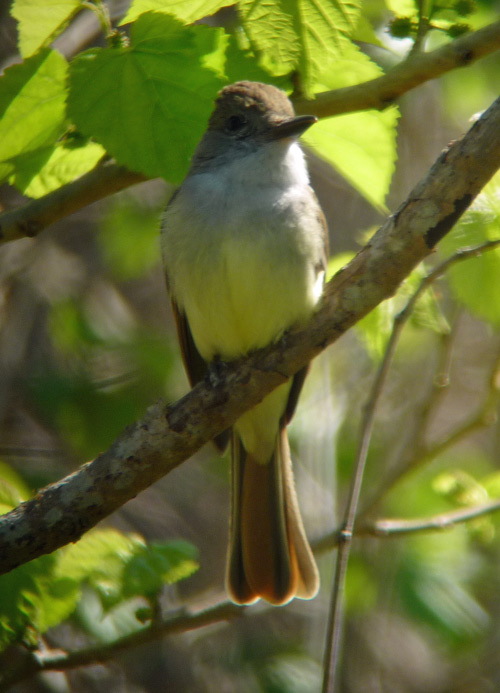
Photo by Justin Bosler
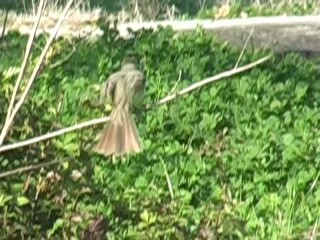
Photo by Phillip A. Wallace
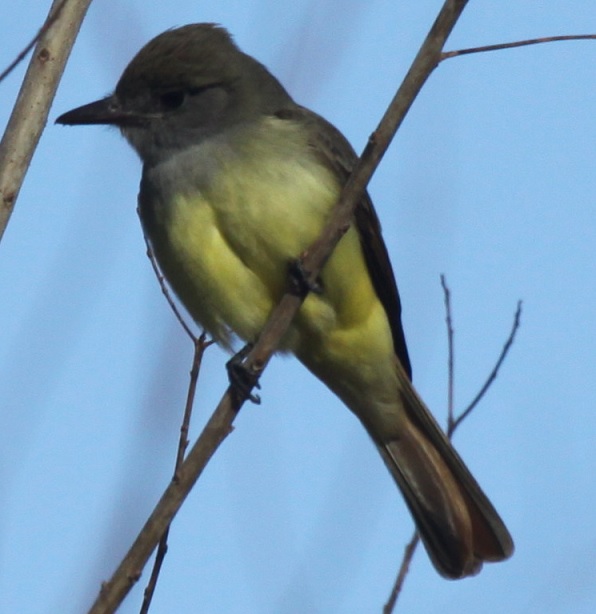
Photo by John P. Sevenair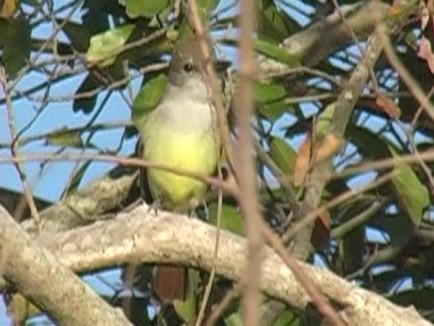
Photo by Phillip A. Wallace
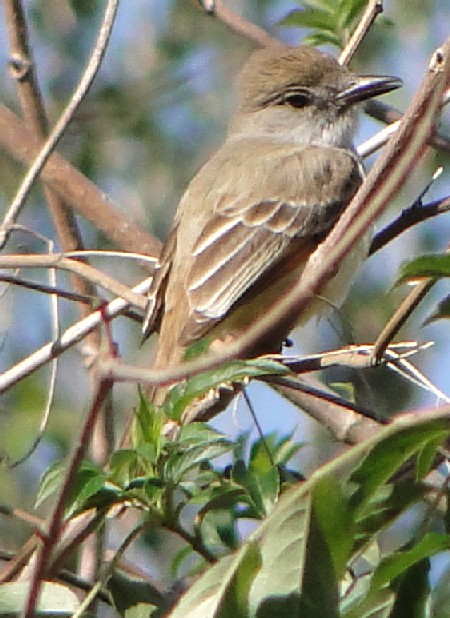
Photo by Mary Mehaffey
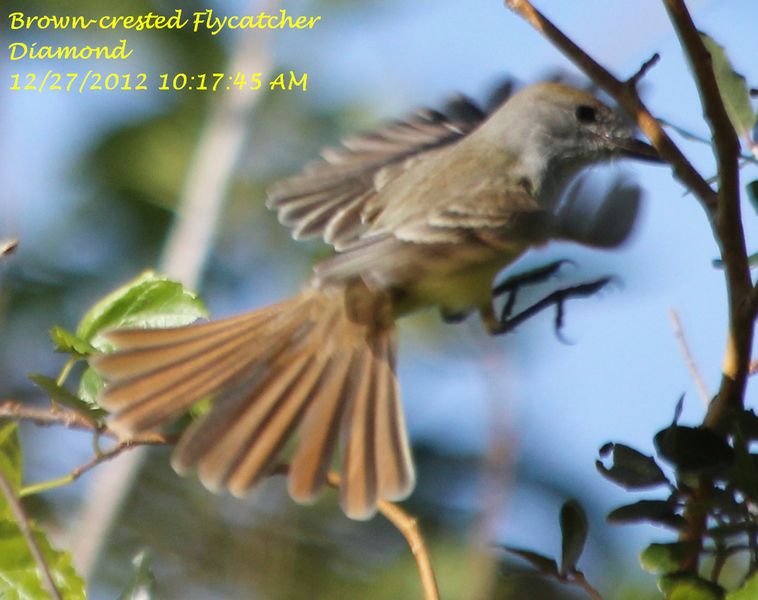
Photo by Phillip A. Wallace
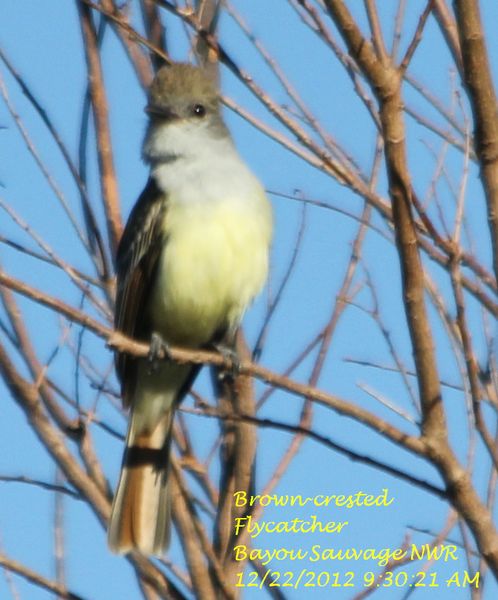
Photo by Phillip A. Wallace
Photo by Cameron Rutt
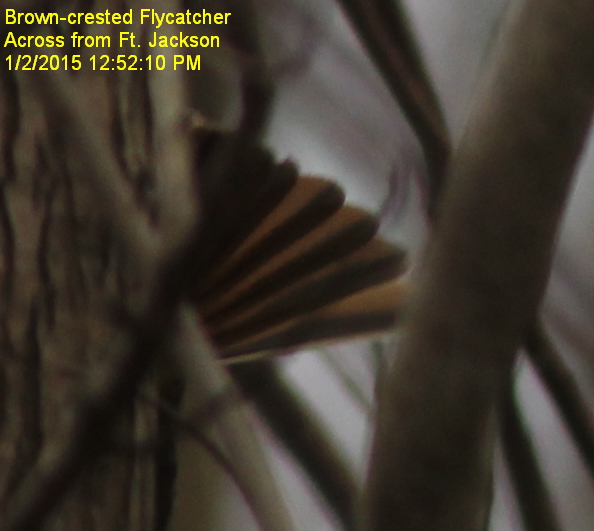
Photo by Phillip
A. Wallace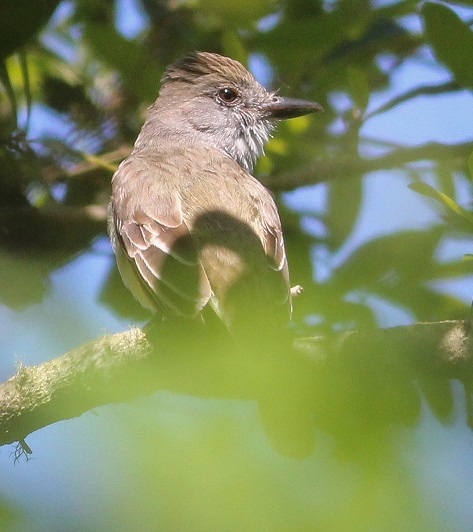
Photo by Cameron Rutt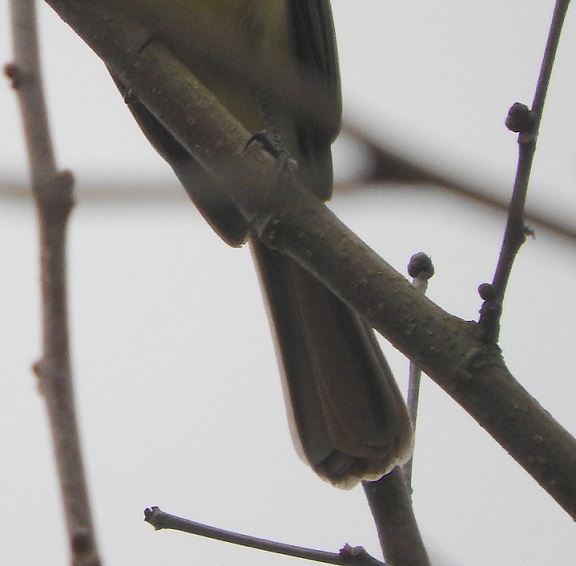
Photo by J. V. Remsen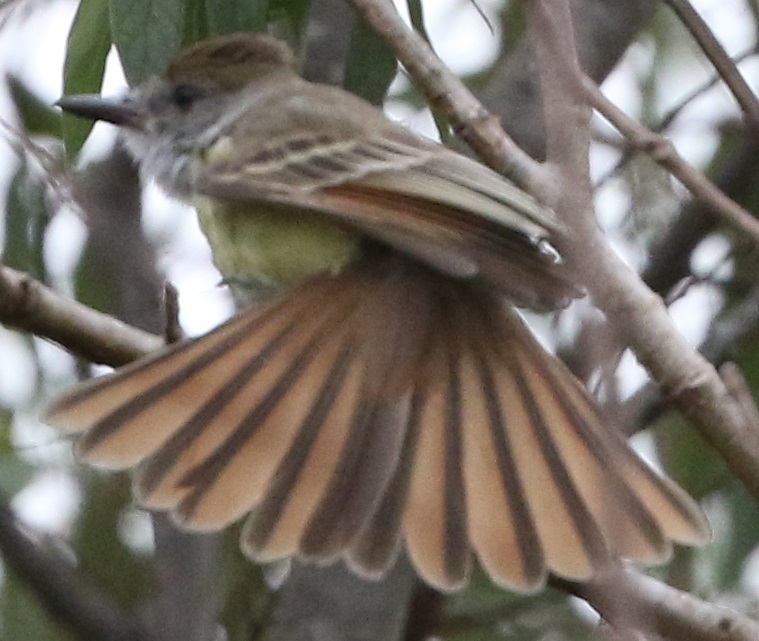
Photo by Joan M. Garvey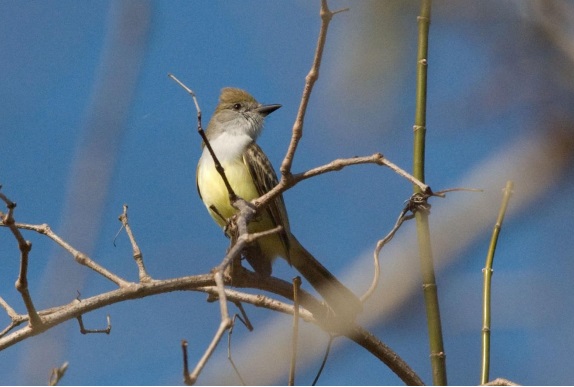
Photo by Robert C. Dobbs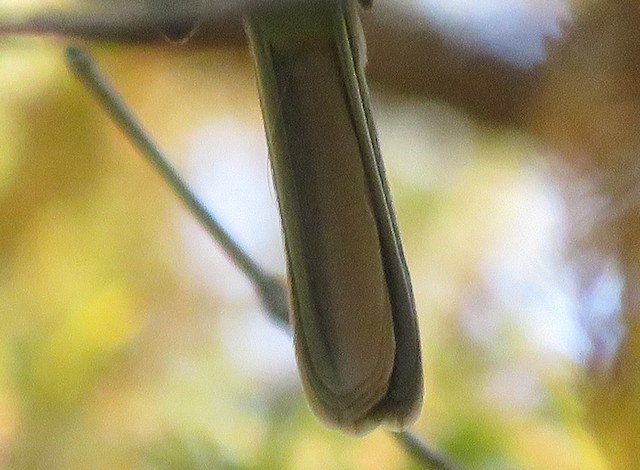
Photo by Rosemary Seidler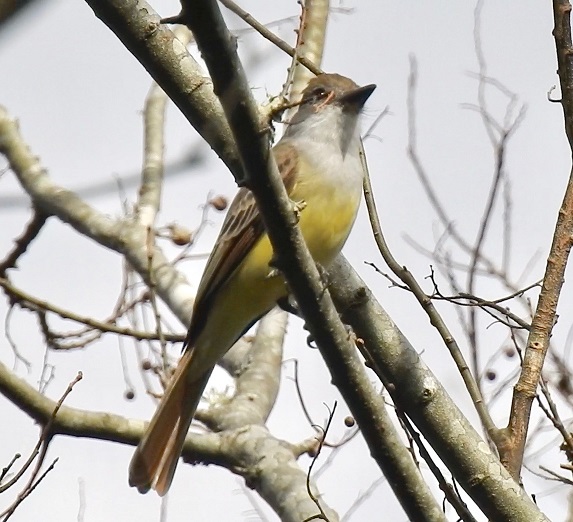
Photo by J. V. Remsen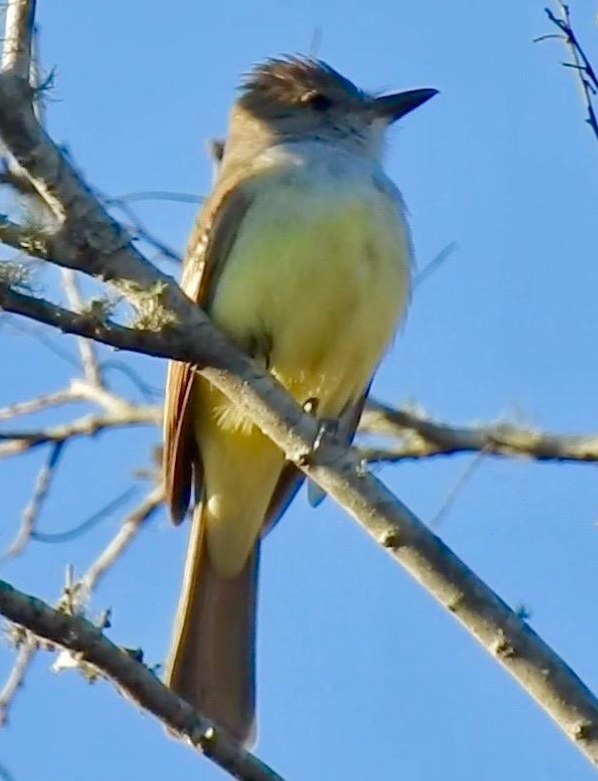
Photo by J. V. Remsen
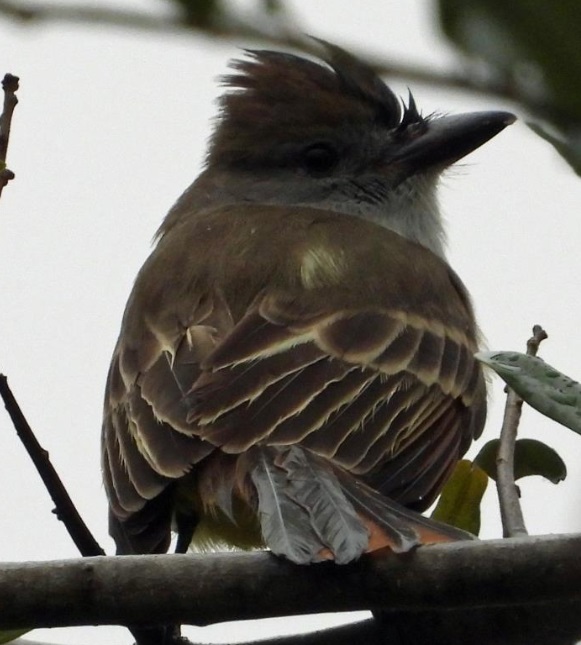
Photo by Jennifer O. Coulson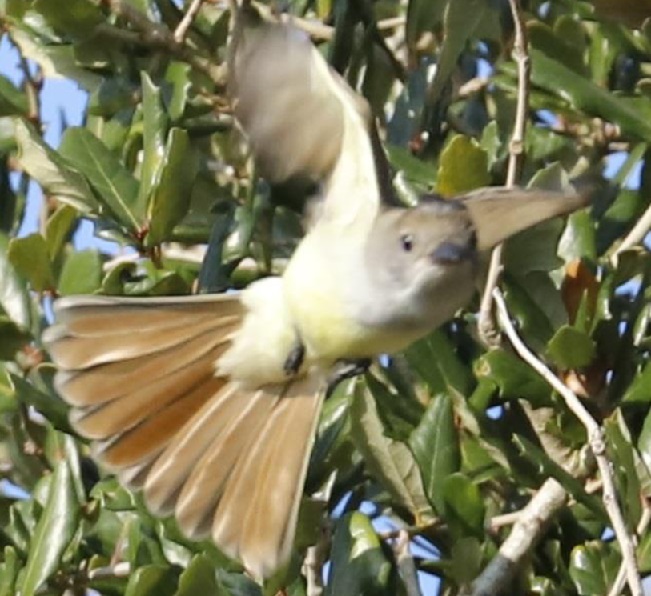
Photo by Dave
Patton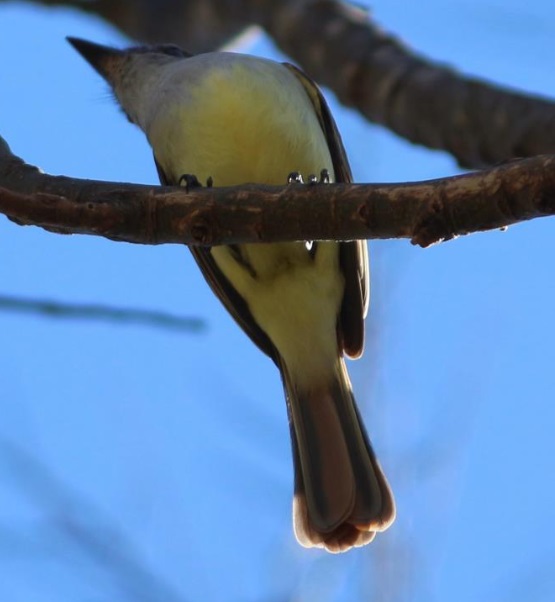
Photo by Oscar Johnson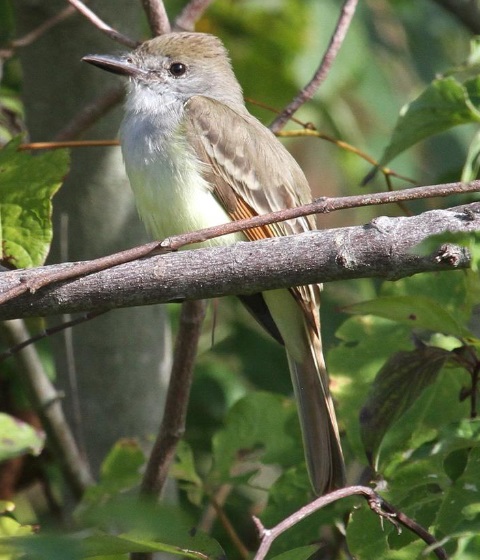
Photo by Esme Rosen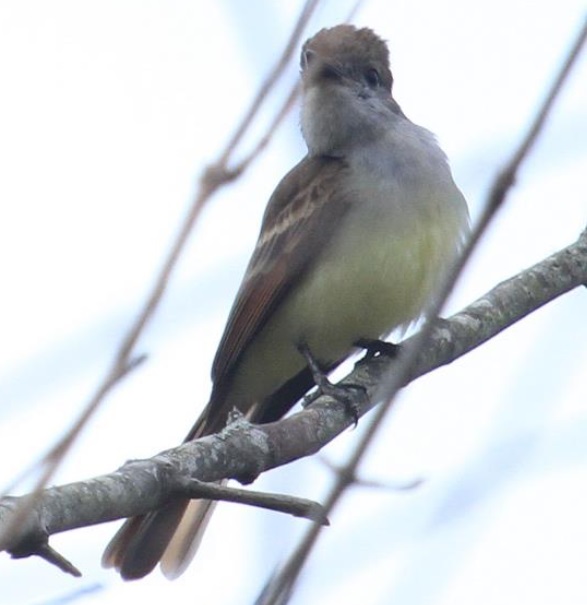
Photo by Esme RosenUnaccepted Records
One (1982-23) at Peveto Beach Woods, Cameron Parish
on 23 October 1982.